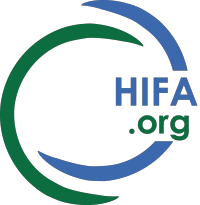Dear Simon,
Yes, as you say the RCN Policy would not be feasible in many settings. It might not even be feasible 'to the letter' in all UK settings. Their statement is also open to interpretation. 'Staff personal mobile phones should never be used to record, transmit or store a patient’s personal details, health information, or images of the patient.' This certainly precludes personal medical records, but it is easy to conceive of times when communication between health workers about a patient may be appropriate. For example, if (as you say) the only working tool the health worker has for communication is their personal mobile phone, and they needed to communicate with another health worker in an emergency, then it will often be necessary to give basic information such as name, age, current medications, and current clinical findings. To do otherwise might endanger the patient.
Below is the citation and abstract of a scoping review from several high-income and middle-income countries, which concludes that: 'Nurses view personal smartphones as an efficient method to gather patient care information and to communicate with the health care team.'
The whole issue is nuanced and context-sensitive.
One of the possible outcomes of this research is that WHO (and/or others) might develop a new international policy guideline on the use of personal mobile phones by health workers. Given the wide heterogeneity of contexts and circumstances, a normative guideline might be challenging to develop and might have limited usefulness?
CITATION: JMIR Mhealth Uhealth. 2020 Nov 26;8(11):e18774. doi: 10.2196/18774
Nurses’ Use of Personal Smartphone Technology in the Workplace: Scoping Review
Andrea de Jong 1,#, Lorie Donelle 1,✉,#, Michael Kerr 1,#
https://pmc.ncbi.nlm.nih.gov/articles/PMC7728531/
ABSTRACT
Background
There has been an increase in the technological infrastructures of many health care organizations to support the practice of health care providers. However, many nurses are using their personal digital devices, such as smartphones, while at work for personal and professional purposes. Despite the proliferation of smartphone use in the health care setting, there is limited research on the clinical use of these devices by nurses. It is unclear as to what extent and for what reasons nurses are using their personal smartphones to support their practice.
Objective
This review aimed to understand the current breadth of research on nurses’ personal smartphone use in the workplace and to identify implications for research, practice, and education.
Methods
A scoping review using Arksey and O’Malley’s methodological framework was conducted, and the following databases were used in the literature search: CINAHL, PubMed, ProQuest Dissertations and Theses, Embase, MEDLINE, Nursing and Allied Health Database, Scopus, Web of Science, and Cochrane Reviews. Search terms used were Nurs* AND (personal digital technology OR smartphone OR cellphone OR mobile phone OR cellular phone). Inclusion criteria included research focused on nurses’ use of their own digital technologies, reported in English, and published between January 2010 and January 2020. Exclusion criteria were if the device or app was implemented for research purposes, if it was provided by the organization, if it focused on infection control, and if it was focused on nursing students or nursing education.
Results
A total of 22 out of 2606 articles met the inclusion criteria. Two main themes from the thematic analyses included personal smartphone use for patient care and implications of personal smartphone use. Nurses used their smartphones to locate information about medications, procedures, diagnoses, and laboratory tests. Downloaded apps were used by nurses to locate patient care–related information. Nurses reported improved communication among health team members and used their personal devices to communicate patient information via text messaging, calling, and picture and video functions. Nurses expressed insight into personal smartphone use and challenges related to distraction, information privacy, organizational policies, and patient perception.
Conclusions
Nurses view personal smartphones as an efficient method to gather patient care information and to communicate with the health care team. This review highlights knowledge gaps regarding nurses’ personal device use and information safety, patient care outcomes, and communication practices. This scoping review facilitates critical reflection on patient care practices within the digital context. We infer that nurses’ use of their personal devices to communicate among the health care team may demonstrate a technological “work-around” meant to reconcile health system demands for cost-efficiency with efforts to provide quality patient care. The current breadth of research is focused on acute care, with little research focus in other practices settings. Research initiatives are needed to explore personal device use across the continuum of health care settings.
HIFA profile: Neil Pakenham-Walsh is coordinator of HIFA (Healthcare Information For All), a global health community that brings all stakeholders together around the shared goal of universal access to reliable healthcare information. HIFA has 20,000 members in 180 countries, interacting in four languages and representing all parts of the global evidence ecosystem. HIFA is administered by Global Healthcare Information Network, a UK-based nonprofit in official relations with the World Health Organization. Email: neil@hifa.org

